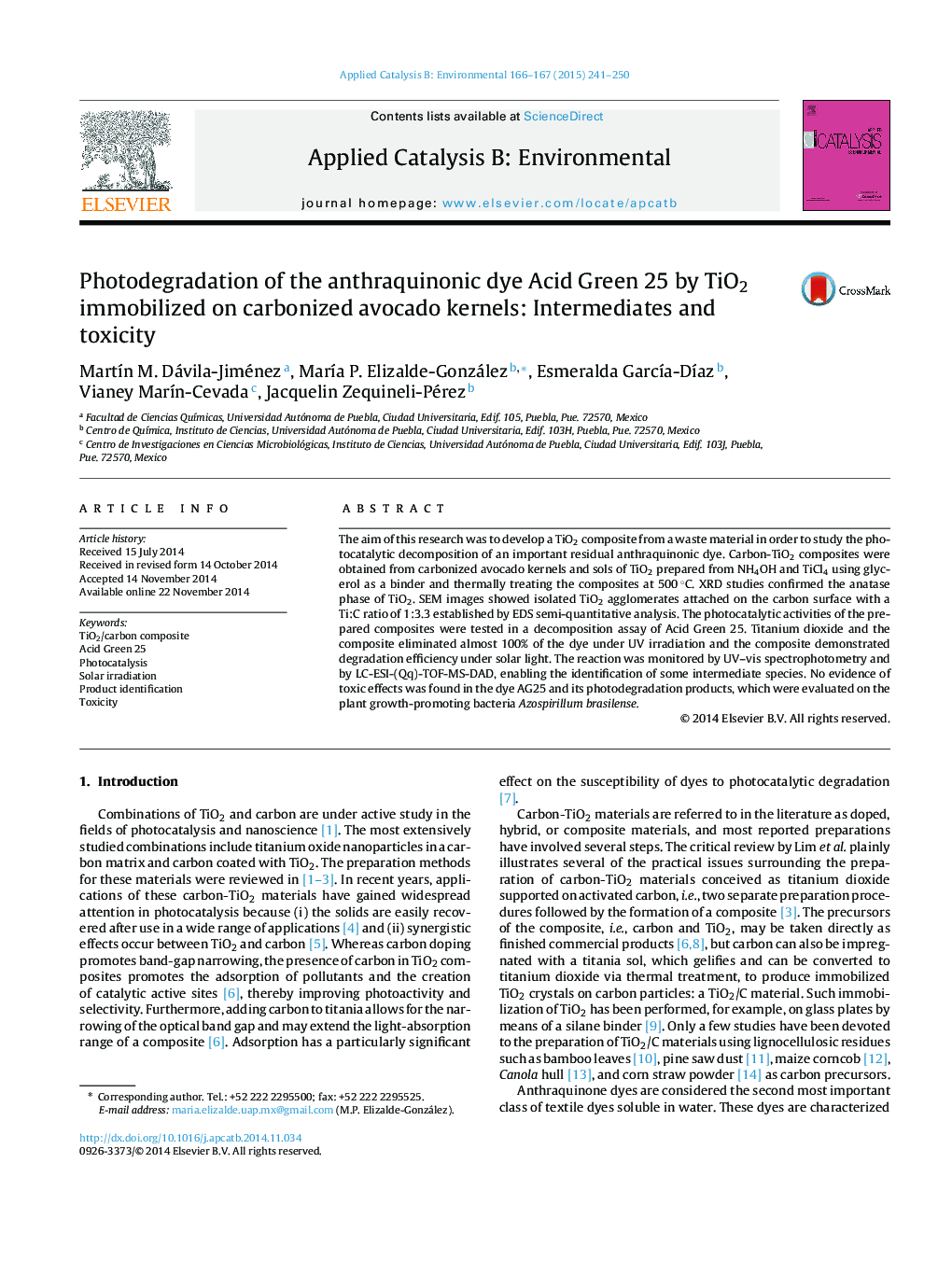| Article ID | Journal | Published Year | Pages | File Type |
|---|---|---|---|---|
| 45716 | Applied Catalysis B: Environmental | 2015 | 10 Pages |
•Avocado carbon impregnated in glycerol with a TiO2 sol produced anatase composite.•The composite demonstrated degradation efficiency with solar light.•Hydroxylated methylbenzenesulfonates identified by LC–MS as products of Acid Green 25.•Amino-5-methylbenzenesulfonate and anthraquinone derivatives present among products.•No toxic effects of the dye AG25 and its photo-products on Azospirillum brasilense.
The aim of this research was to develop a TiO2 composite from a waste material in order to study the photocatalytic decomposition of an important residual anthraquinonic dye. Carbon-TiO2 composites were obtained from carbonized avocado kernels and sols of TiO2 prepared from NH4OH and TiCl4 using glycerol as a binder and thermally treating the composites at 500 °C. XRD studies confirmed the anatase phase of TiO2. SEM images showed isolated TiO2 agglomerates attached on the carbon surface with a Ti:C ratio of 1:3.3 established by EDS semi-quantitative analysis. The photocatalytic activities of the prepared composites were tested in a decomposition assay of Acid Green 25. Titanium dioxide and the composite eliminated almost 100% of the dye under UV irradiation and the composite demonstrated degradation efficiency under solar light. The reaction was monitored by UV–vis spectrophotometry and by LC-ESI-(Qq)-TOF-MS-DAD, enabling the identification of some intermediate species. No evidence of toxic effects was found in the dye AG25 and its photodegradation products, which were evaluated on the plant growth-promoting bacteria Azospirillum brasilense.
Graphical abstractFigure optionsDownload full-size imageDownload as PowerPoint slide
